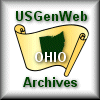The electric line from Cleveland to Mansfield was built with a substation at Rt. 303 and Substation Road as Brunswick started to grow. People more commonly hear it called the Interurban Railway. This was a welcome transportation for people wanting to go to Cleveland and also for shipping milk from here to Cleveland.
The gravel pit on Laurel Road west, now being filled in by Boyas Excavating, was created because of the line.
When the Interurban line was built, a spur was run to what was then only a hill. Then, the gravel was blasted away from the hillside and shoveled by hand and placed in a car. It was hauled along the line where it was used to fill between the tracks.
The work was done by a group of 30 Italian men who lived on the site in a boarding house. Their work, however, was all for naught, because they discovered that the gravel wouldn't pack down and it all had to be shoveled out and replaced with cinders.
The pit was later enlarged by Minnesota Mining.
The powerhouse for the electric lines was on Substation Road and held two large generators. There was a blacksmith shop at the substation where buggies were repaired. Farnum Gibbs sold Gertslager buggies there as well. Material from a church, town down in Strongsville, was used for the building.
The crossing was the scene of several accidents. One night, Ruth Miner and Bernard Ridiker lost their lives crossing the track. There were no ambulances at the time so Ruth's father had to carry her body on his lap to the funeral director's office. Glenn Kingsbury also was killed on the tracks three miles south. Perry Freese was crossing with his train binder when he was hit by the train. It demolished his machine and killed Freese.
Another accidental death occurred there, but of a different nature.
Sam Roth worked on a section crew. He stepped into a booth where the phone for the electric line was housed. There was a short circuit and he was electrocuted.
A fellow by the name of Bennett ran his grain machine into the side of an electric car, but was alive to tell about it.
Another group tried to finance an Interurban car line out what is now Rt. 42. They graded for it all the way from Cleveland to just south of Kingsbury Road when they discontinued their efforts.
While the Interurban line was a great source of revenue for the community, it, like many similar systems throughout the nation, gave way to the auto.



